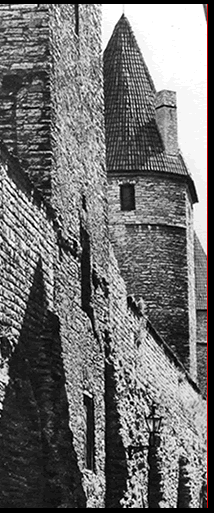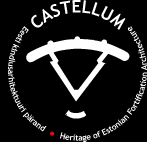


MTÜ Castellum (MTÜ – a non-profit organisation) was established in October 2002. We have been involved in studying fortification heritage and seeking contemporary functions, and we have worked with individuals and institutions from the same field both in Estonia and abroad. MTÜ Castellum is an associate member of Walled Towns Friendship Circle. The following are Castellum’s goals:
Our business, its opportunities and disadvantages: The heritage of Estonian fortification is quite rich – there are medieval stone burgs and citadels and, of course, town wall of Tallinn. There are some earthworks from 17th -18th centuries, and 19th century stone structures – such as the White Tower on Paljassaar Peninsula and the remnant buildings of naval fort (later also known as ‘Patarei’ prison). There are also naval defence positions, which are among the best in Europe in terms of scale and historical value – the extent of complex of fortresses of naval defence of St. Petersburg is difficult to embrace at a glance. Unfortunately, protection of this heritage and the use of it for contemporary purposes is a process that is full of gaps as can be seen in the case of other architectural monuments – all the attention and care is devoted to single monuments, such as the Old City of Tallinn and Tallinn Town Wall. The closer we move away from the town centre and farther from Tallinn, the less we encounter care or even just awareness. Very often the people who have historical sites on their land do not even realise it – and in such cases the owners do not take any measures to protect the site. There is nothing as disorderly as architecture that is deprived of caring human hands. Buildings are crumbled by weather and time. An owner or project designer, often knowing nothing of history, may not value a well-preserved cobblestone road, ammunition cellar, or recognise a part of a structure hidden inside a hill or abandoned railway embankment. When observed separately these sites seem unimpressive, but as we know the roots of negligence lie deep in ignorance. One might not easily identify a fortress as being part of a complex of structures as we know from present and former human activity, which have been damaging to surrounding structures. Even when people do show some interest in the structures in their possession, they do not care for the site appropriately – until one day we are faced with the fact that memories are all that are left... Building and tourism are picking up speed in Estonia. Things seemingly utopian only a couple of years ago are becoming reality today. People are looking at buildings and areas that were initially forgotten and slowly perishing. Unfortunately, here you can go wrong only once – later there is no second chance to correct mistakes... Fortification architecture in Estonia has not been adequately researched and related activities require more co-ordination. Informing the population of Estonia and tourists of the existing sites or including them in tours that introduce military architecture is practically non-existent. There is no reference material that can be consulted by those bodies that devise plans for urban and rural regions, project designers, the state and local authorities, real estate developers and owners – in a word, anyone acting in regions that boast valuable examples of military architecture. There is no source that the interested parties can contact for advice – what can be done with the heritage, what is permitted and what has already been done in our own and neighbouring countries. Invitation: Castellum, which specialises in the field of fortification heritage, invites all interested individuals and associations to pool their resources and advice in such a way as to obtain an overview of the information gathered so far; make owners aware of the values they possess; co-operate with the planning and project designing authorities to ensure that existing fortifications are recorded in all plans and programmes; make the public aware of the values found on our doorsteps; contribute to real estate development and the tourism sector by introducing them to preserved fortification sites while enabling the wider society to discover the value of preserving fortifications. |